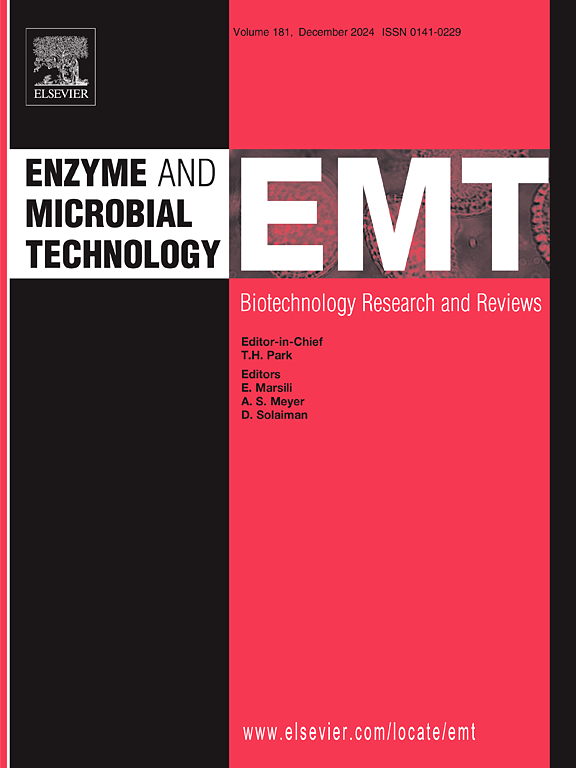An environmental “fairytail”: Removal of mercury from water via phage virion-based biosorption
IF 3.4
3区 生物学
Q2 BIOTECHNOLOGY & APPLIED MICROBIOLOGY
引用次数: 0
Abstract
Contamination of water with mercury constitutes a serious public health problem, especially in locations where the use of Hg occurs improperly/illegally and negligently, as is the case in the Amazon region (Brazil). The riverside populations in the Amazon are frequently invaded by illegal mining, exposing these populations to significant risks, of which contamination by heavy metals such as mercury (Hg2+) has the potential to cause serious illnesses. Furthermore, exposure to this metal causes neurological, cardiovascular, immune and digestive system disorders, in addition to damaging the lungs, kidneys, skin and eyes. The aquatic biome is extremely important for the local economy and population, being drastically affected by Hg2+ contamination and its effects. Therefore, it is necessary to develop bioremediation/biomitigation methods that are effective and less harmful to the environment, aiming to remove Hg2+ from water. Hence, when we think about new methodologies that can lead to the reduction of mercury in water, the use of protein entities is a potential option and, for this reason, we can highlight the possibility of using bacteriophage virions to remove Hg2+ ions from water by biosorption using their negative Zeta Potential for this purpose. In this sense, the main goal of the research work undertaken was to test the possibility of mitigating the presence of mercury (II) ions in water through the immobilization of a bacteriophage isolated and already characterized by our research group (EcoM021, T4 myovirus of the Straboviridae family and genus Tequatrovirus), on a chitosan-coated Ca-alginate microparticle support, through which water contaminated with Hg2+ ions was percolated. The system developed in microparticle form integrating trapped phage virions showed to be very promising for retaining mercury ions through biosorption (electrostatic attraction), thus enabling the removal of ionic mercury from water.
环境 "仙女棒":通过基于噬菌体病毒的生物吸附技术去除水中的汞。
汞对水的污染是一个严重的公共卫生问题,尤其是在汞的使用不当/非法和疏忽的地 方,亚马逊地区(巴西)就是这种情况。亚马逊河流域的居民经常受到非法采矿的侵扰,使这些居民面临巨大的风险,其中汞(Hg2+)等重金属的污染有可能导致严重的疾病。此外,接触这种金属会导致神经、心血管、免疫和消化系统紊乱,还会损害肺、肾、皮肤和眼睛。水生生物群落对当地经济和人口极为重要,受到 Hg2+ 污染及其影响的严重影响。因此,有必要开发有效且对环境危害较小的生物修复/生物缓解方法,以去除水中的 Hg2+。因此,当我们考虑可以减少水中汞含量的新方法时,使用蛋白质实体是一个潜在的选择,为此,我们可以强调利用噬菌体病毒的负 Zeta 电位,通过生物吸附去除水中 Hg2+ 离子的可能性。从这个意义上说,这项研究工作的主要目标是通过在壳聚糖包覆的 Ca-alginate 微粒支撑物上固定我们研究小组分离并已定性的噬菌体(EcoM021,Straboviridae 科、Tequatrovirus 属的 T4 myovirus),测试减轻水中汞 (II) 离子存在的可能性。通过生物吸附(静电吸引)保留汞离子,从而去除水中的离子汞。
本文章由计算机程序翻译,如有差异,请以英文原文为准。
求助全文
约1分钟内获得全文
求助全文
来源期刊

Enzyme and Microbial Technology
生物-生物工程与应用微生物
CiteScore
7.60
自引率
5.90%
发文量
142
审稿时长
38 days
期刊介绍:
Enzyme and Microbial Technology is an international, peer-reviewed journal publishing original research and reviews, of biotechnological significance and novelty, on basic and applied aspects of the science and technology of processes involving the use of enzymes, micro-organisms, animal cells and plant cells.
We especially encourage submissions on:
Biocatalysis and the use of Directed Evolution in Synthetic Biology and Biotechnology
Biotechnological Production of New Bioactive Molecules, Biomaterials, Biopharmaceuticals, and Biofuels
New Imaging Techniques and Biosensors, especially as applicable to Healthcare and Systems Biology
New Biotechnological Approaches in Genomics, Proteomics and Metabolomics
Metabolic Engineering, Biomolecular Engineering and Nanobiotechnology
Manuscripts which report isolation, purification, immobilization or utilization of organisms or enzymes which are already well-described in the literature are not suitable for publication in EMT, unless their primary purpose is to report significant new findings or approaches which are of broad biotechnological importance. Similarly, manuscripts which report optimization studies on well-established processes are inappropriate. EMT does not accept papers dealing with mathematical modeling unless they report significant, new experimental data.
 求助内容:
求助内容: 应助结果提醒方式:
应助结果提醒方式:


